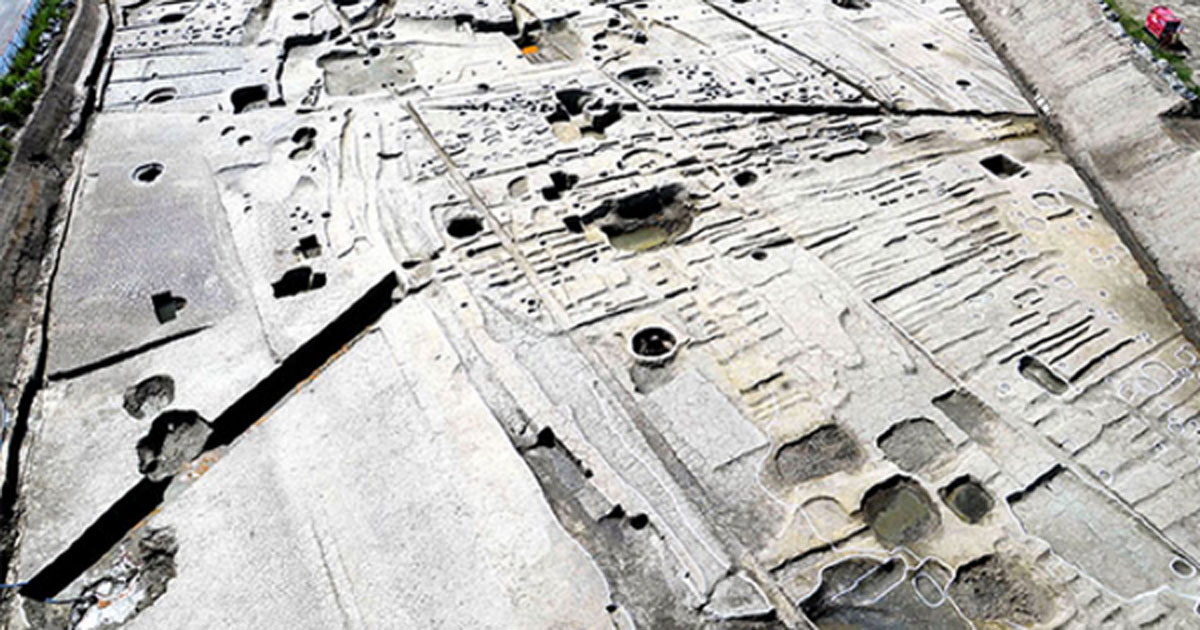Mysterious Japanese Second Capital Built 1200 Years Ago by Controversial Empress is Finally Found
Japanese archaeologists working in Yao, Osaka Prefecture believe they have found the remains of Yugeno-miya, an unfinished city began by the orders of an empress who is remembered for a turbulent reign and her alleged affair with a Buddhist monk.
The Asahi Shimbun reports that the recent discovery provides the first concrete evidence for the existence of the second Japanese capital previously only mentioned in 8th century texts. Those documents explain how the ruler Shōtoku, who reigned from 764 to 770 in the Nara Period (710-784), had begun the extensive building project but died before she could see to its completion.
Shōtoku Tennō (also known as Kōken Tennō) was the last empress to rule Japan until the 17th century, but she was on the throne twice. During her first rule, from 749-758, she was known as the empress Kōken. She abdicated after nine years. Her second reign arose due to her relationship with the Buddhist monk Dōkyō. Civil war erupted as Kōken pushed for Dōkyō’s increase in power at the imperial palace. In 764, Kōken and Dōkyō had won the conflict and she re-ascended the throne under her new name – Shōtoku.
- Theodora: From humble beginnings to powerful empress who changed history
- Was it Love or Witchcraft? The Magical Practices of Chinese Empress Chen Jiao

Portrait of Japanese Empress Kōken (孝謙天皇), also known as Empress Shōtoku (称徳天皇) (718-770). (Public Domain)
So far, archaeologists working at the Yao site have found the remains of an extensive trench and large pits arranged in a grid pattern lined up with the four cardinal points. These were dug to hold massive wooden pillars. It has been proposed that the trench served builders in their work. Masashi Kinoshita, professor emeritus of archaeology at Tokyo Gakugei University, said: “Few details are known of Yuge-no-miya. The recent discovery of the canal may help unravel the mystery.” It may be that building materials arrived through the water-filled canal.
Archaeologists found their first evidence for the legendary second capital in February in the form of what was once a huge pagoda rising an estimated 7 stories high. This pagoda is believed to have been created by Dōkyō for the Yugedera temple before he fell from grace following Shōtoku’s death.
- Entire Family Executed by First Female Emperor of China: Tomb Reveals Bloody Past
- 6th Century Crown of Chinese Empress Revealed for the First Time in its Full Glory

The Five-storied Pagoda of Hōryū-ji, a Buddhist temple in Ikaruga, Nara prefecture, Japan. (CC BY SA 3.0) The pagoda created by Dōkyō for the Yugedera temple is believed to have been even taller.
Stories say that Dōkyō gained the empress’ favor by devoting prayers to her when she was seriously ill. It was with her support that the monk gained political power – he was named prime minister within a year of Shōtoku’s second reign and was a high priest of state by 766. But this wasn’t enough control for the monk it seems and he apparently convinced an oracle to fake a prediction for him as Shōtoku’s successor. Things didn’t go as Dōkyō planned however, and he found himself banished soon after the empress’ death for his power plays which had angered other members of government.
The political disturbances created by the empress and monk’s relationship was enough to incite the Japanese government to ban women from ruling for almost a thousand years!

Empress Meishō, the next female ruler of Japan after Shōtoku, reigned from 1624-1696. (Public Domain)
Top Image: The archaeological site at Yao, Osaka Prefecture, Japan. Source: Yao Municipal Board of Education

















